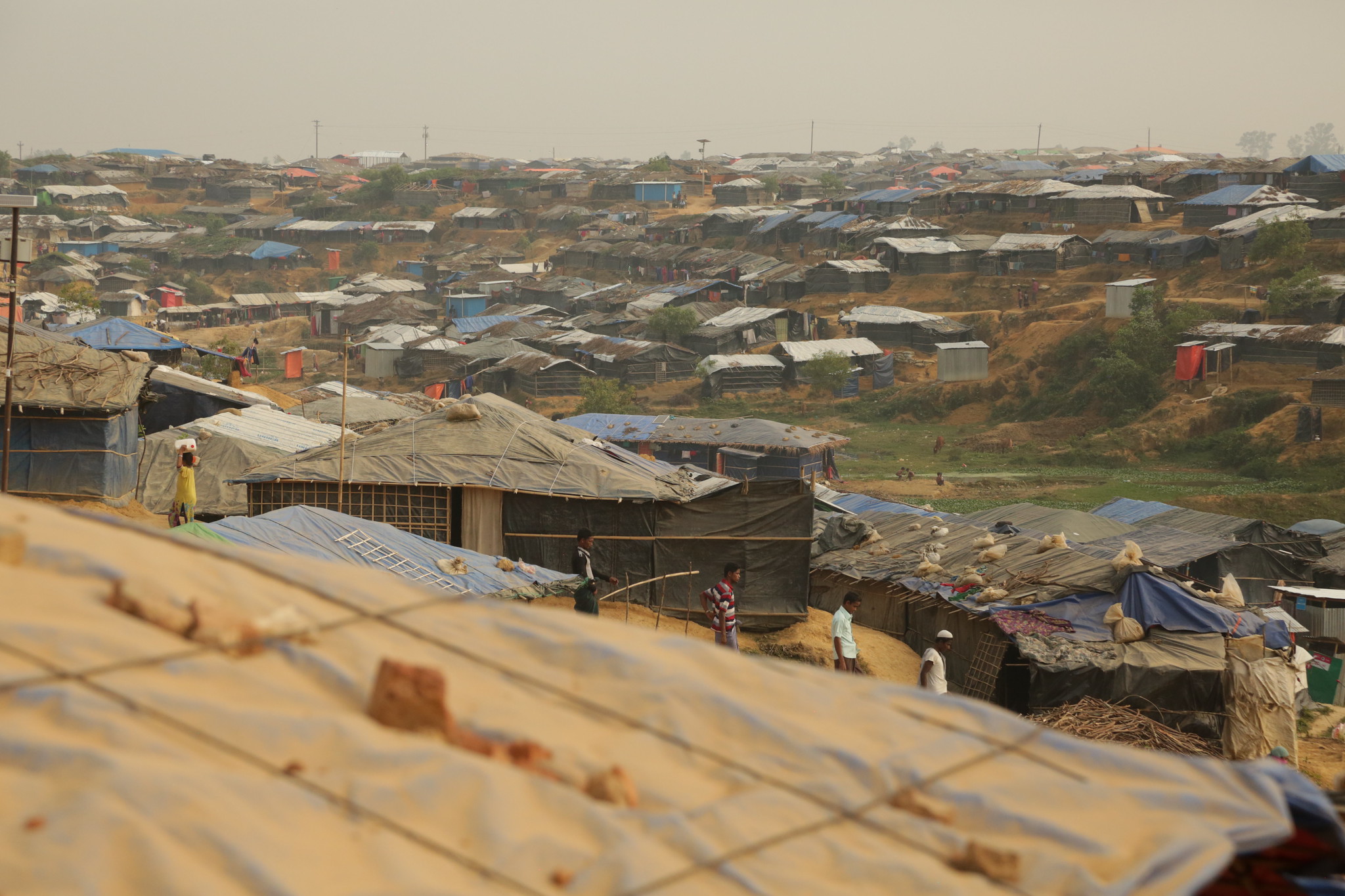Damage to Myanmar’s environment has been constant and incremental under decades of military rule. Averse to international aid and assistance — which has not been particularly high in any case — the junta has been ploughing the country’s natural resources for revenue. Declining law and order and political control has led to further illegal activities — with devastating impact for the population. Htet Myat Aung looks at the various aspects of environmental degradation, and hopes for Myanmar’s beleaguered future.
The military coup in Myanmar in February 2021 has given rise to significant uncertainty about the future stability of the country. The seizure of power by the Tatmadaw has sparked armed resistance and an overall deterioration in the country’s economic conditions. In response to multiple international sanctions, the junta has been compelled to rely on the country’s natural resources to fund its military expenditure.
Myanmar is now one of the world’s most deforested nations due to its long-standing civil conflict, and persistent military dictatorship. In its pursuit for foreign revenue, the State Law and Order Restoration Council (SLORC) and the State Peace and Development Council (SPDC) regime (1988–2011) over-exploited natural resources and permitted projects that drastically impacted the environment; approximately 19 per cent of the country’s forests were cut down. The environmental degradation wrought by SLORC–SPDC continues to impact the people of Myanmar today.
Deforestation continued under the leadership of U Thein Sein (2011–16), with Myanmar ranking third in the world (after Brazil and Indonesia) in deforestation. The National League for Democracy (NLD) government, which enjoyed significant public support, imposed a nationwide logging ban in 2016 and extended it for a decade in the densely forested Pegu Yoma region. However, illegal logging activities boomed since the coup d’état. Satellite data shows that extensive areas in the central rainforest have been chopped down since February 2021; according to available proof, deforestation is linked to the junta.
*
The enforcement of law and order has deteriorated dramatically since February 2021, resulting in a surge in illegal mining activities in the country’s remote areas. Local environmental activists accuse the military junta of backing unlawful mining operations. Mining for rare earth elements, which is currently flourishing in Myanmar’s northern Kachin mountain zone, has devastating and unpredictable consequences for the region’s ecosystem and inhabitants.
Myanmar’s climate change landscape too is being exacerbated by the country’s environmental degradation; rising average temperature over several decades is the most significant evidence of it. Average annual temperatures in Myanmar are expected to increasingly continuously until at least 2040. According to the United Nations MIMU analytical brief, Myanmar’s national daily average temperature rose about 0.25°C per decade between 1981–2010. Although increasing temperatures depend on global carbon reduction successes/ failures, the trend is expected to rise. Even in optimistic scenarios developed by the Intergovernmental Panel on Climate Change (IPCC), the rise in average temperatures is expected to increase by at least 1°C in the next 50 years.
In 2010, Myanmar encountered meteorological droughts as the region witnessed record-breaking temperatures, with numerous areas recording an average increase of 2–3°C. This phenomenon, coupled with poor water resource management, led to a significant water shortage in several areas — Ayeryarwaddy, Yangon, Bago, Mandalay, and Sagaing regions, as well as Rakhine, Mon, and Shan states. Between 1997–98, 2010, and 2014, the central region of Myanmar — Mandalay, Magway and Sagaing — experienced crop failures due to droughts. These regions, with a combined population of 11 million, rely heavily on agriculture farming, contributing about 22 per cent of Myanmar’s rice paddy, 89 per cent of its sesame production, and substantial amounts of pulses, seeds and livestock.
Flooding stands out as the most recurrent and impacting natural disaster in Myanmar, constituting 51 per cent of disasters affecting over 100 individuals between 1970–2015. The Asian Disaster Preparedness Center reported three flood events between 2010–20, each claiming more than 100 lives. Notably, the 2012 flooding engulfed nearly all regions of Myanmar, resulting in the loss of 125 lives and the displacement of over 1.5 million people. This prolonged deluge inflicted an estimated US$ 1.5 billion in damages, affecting approximately 20.4 per cent of the nation’s rice cultivation area, and causing local food prices to surge by up to 25 per cent. In total, the calamity impacted a staggering 17 million people. Between 300,000–400,000 people have been displaced by flooding every year from 2016–19. The likelihood of floods in Myanmar is particularly concentrated along the coasts, the Ayeyarwady River and Karen (Kayin) State. The overall population at risk of flood exposure is immense, with an estimated 28 million people living in vulnerable districts. Among these, Yangon and Ayeyarwady, followed by Bago and Mandalay regions, are the most densely populated areas facing such risks.
Though less frequent than floods, cyclones in Myanmar tend to be significantly more dangerous as single events which account for 18 per cent of disasters affecting 100 or more people between 1970–2015. On 2 May 2008, Cyclone Nargis affected more than 50 townships, mainly in Ayeyarwady and Yangon regions. It brought devastation through wind speeds up to 200 kms per hour, massive waves elevating sea levels by 3–4 metres, and extensive inland flooding via irrigation channels. Cyclone Nargis, the worst natural disaster in Myanmar’s history, killed around 140,000 people and seriously affected 2.4 million more. Additionally, it resulted in the destruction of 38,000 ha of mangroves and damaged forests, wetlands and coastal ecosystems. The vulnerability of coastal populations, especially in Rakhine and Ayeyarwady, increases the overall impact of cyclones in Myanmar. With the Ayeyarwady region being home to over 6 million people and contributing one-third of the country’s rice production, cyclones can have devastating consequences on both lives and livelihoods.
Following the military coup, rare earth mining has experienced a boom in Myanmar’s north-eastern region, which is under the control of a Border Guard Force connected to the country’s military chain of command. According to a report by Global Witness, there are approximately 2,700 rare earth mining collecting pools scattered across nearly 300 locations, covering an area comparable to Singapore. The mining method employed in Myanmar, known as ‘in-situ leaching’, involves removing vegetation and drilling holes into the mountains, and then injecting a solution of ammonium sulphate into the holes to dissolve the rare earth ions from the rock. The resulting liquid is then drained into collection pools, where the rare earth minerals are precipitated. However, after the leaching process, the chemical-filled pools are abandoned without any rehabilitation.
The effects of rare earth mining on local communities are long-lasting, resulting in significant environmental damage that requires billions of dollars for clean-up costs. In Jiangxi, where many rare earth mines have closed, the environmental clean-up cost amounted to US$ 5.5 billion, and it is estimated to take up to 100 years for a full recovery. The 2022 Global Witness Myanmar Report highlights the dire situation near rare earth mining sites, with rivers remaining contaminated, leading to the disappearance of most fish, birds and animals in and around the river. Local communities continue to struggle to access clean drinking water, and farmers are unable to grow crops on land near mining areas. A critical concern is that contaminated watercourses near the mines flow directly into the N’Mai Kha river, a tributary of the Ayeyarwady, which is Myanmar’s most important river and supports two-thirds of the country’s population of 54 million people.
*
Urgent action is needed to address the military junta’s involvement in risky natural resource ventures, particularly rare earth mining, which has severe consequences for Myanmar’s environment, community and the nation as a whole. However, at a time when Myanmar’s environment desperately requires defenders, environmental activists are encountering various new pressures and security threats. The safety of these activists has become significantly more precarious due to the implementation of the highly restrictive Organisation Registration Law enacted in October 2022. Further, the junta detained several environmental activists, exacerbating the challenges faced by those striving to protect the environment.
The Myanmar junta’s approach to natural disaster management has put thousands of lives at risk both in the present and the past. The junta views international aid as a threat to its power and, as a result, has blocked such assistance. In a disturbing instance, during the 2008 Cyclone Nargis, the former SLORC regime deliberately hindered international aid to cyclone victims. A decade later, Cyclone Mocha struck, bringing torrential rain and devastating winds of up to 250 kms per hour, wreaking havoc on large parts of the coast on 14 May 2023. Once again, the junta resisted humanitarian access, particularly in the affected regions of Rakhine state.
*
Environmental degradation, natural disaster mismanagement and climate change in Myanmar are not only local issues but can affect neighbouring countries as well. Due to its political turmoil, Myanmar has 1.7 million displaced people; environmental impact and climate change can hasten the collapse of the state economy, and send millions of climate refugees to neighbouring countries.
Addressing the urgent climate crisis in Myanmar requires targeted international sanctions on the junta’s high-risk resource businesses. Additionally, engaging with democratic groups in Myanmar, such as the NUG and Ethnic Armed Organisations (EAOs), with environmental policies can help mitigate the environmental and climate challenges facing the country. The international community must recognise that these issues not only affect Myanmar but can also have regional implications for neighbouring ASEAN countries. Urgent action and support are essential to protect Myanmar’s environment, economy and population from an unsustainable situation.
*
The views expressed here are those of the author and do not represent the views of the ‘South Asia @ LSE’ blog, the LSE South Asia Centre or the London School of Economics and Political Science. Please click here for our Comments Policy.
This blogpost may not be reposted by anyone without prior written consent of LSE South Asia Centre; please e-mail southasia@lse.ac.uk for permission.
Banner image © Fabiana Rizzi, ‘Beautiful Reflection of Kakku’s Pagodas’, Myanmar, 2022, Unsplash.
*







